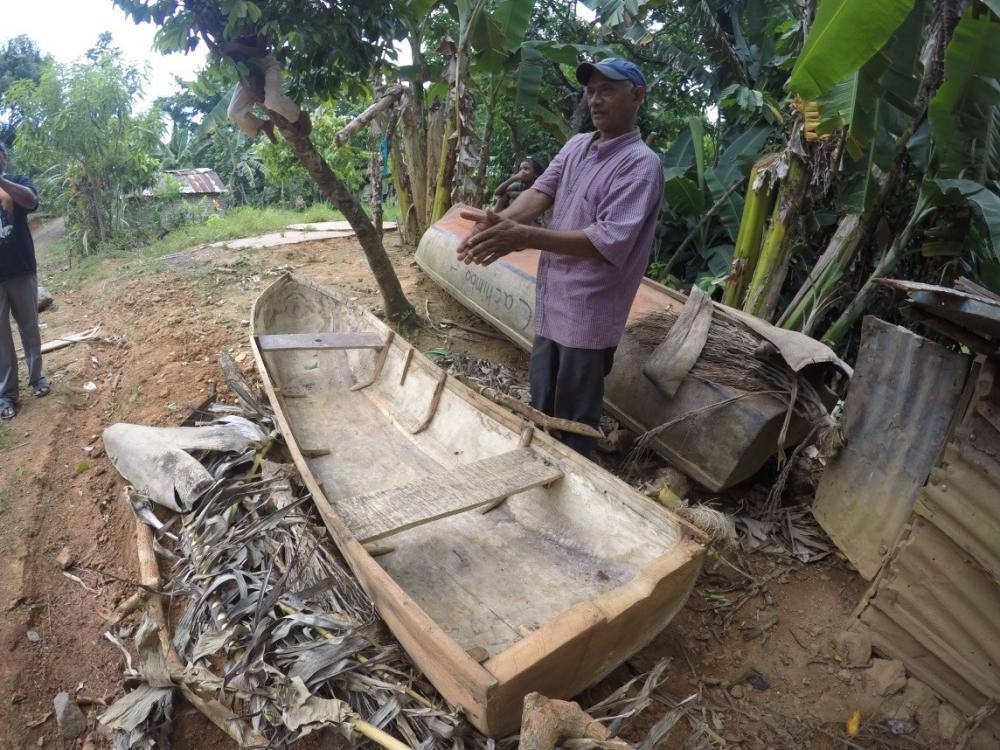Cultural Connections in Puerto Rico
Puerto Rican culture is typically associated with the Spanish Europeans, which isn't terribly shocking considering the legacy of Spanish colonialism. What is less known however, is that Puerto Rican culture did not start with the Spanish. When the Spaniards colonized Puerto Rico centuries ago, they did so over the backs of the little known Taíno. In fact, according to the Smithsonian, “Across the Caribbean, in Jamaica, Cuba, Puerto Rico, and Haiti, you can
find indigenous influences: herbal traditions, local spiritual or
religious traditions, memories associated with the landscape,
traditional agricultural crops and farming methods, home-building
techniques, crafts like basketry and fishing nets, and Taíno words.” Additionally the Smithsonian adds, "Many words today, especially in the Spanish Caribbean, reflect Taíno
influence, including the names “Cuba,” “Haiti,” and everyday vocabulary
like “barbeque,” “canoe,” and “hurricane.”" (Smithsonian Global). So as we can see, the culture of Puerto Rico is not just from Spanish colonization, but also due to the indigenous cultures that were able to survive despite the rampant oppression they received. And as you can see from the quote from the Smithsonian, many words that would be used in the mainland United States actually originate from the original Taíno. Language has a huge impact on culture, as we can see how the Taíno have influenced not just Puerto Rico but other countries across the world. And as the United States usage of English has evolved and spread out across the world, indirectly, these concepts that came from the Taíno serve as a good reminder just how important identifying pieces of culture can be. And personally, the fact that the Spanish colonists usurped the Taíno culture but managed to keep their culture relevant not just through Spanish colonization, but kept this going even through the American conquests of the early 1900's and made it relevant into the modern day is quite impressive.
(credit: Smithsonian Global)
The legacy of the Taíno do not just affect Puerto Rico and the United States, however. Their legacy has ripple waves that pierce throughout all of the Caribbean, and even far beyond that. For instance, according to Pero Like (1:10, “How Taíno Culture Affects Us Today,”), that involved even such peoples like the Mayans. The Taíno were not just a smiple group of people who lived and traded exclusively among themselves, but were interacting with many different parts of the Caribbean and South America, and their culture surely reflects that. Despite the attempts to systematically wipe out the Taíno by Christopher Columbus, the Taíno managed to insure that their culture would live on in other ways. Based on the video from Pero Like (2:28, “How Taíno Culture Affects Us Today,”), we can see that their culture still lives on in the countrysides. Many of the Taíno style houses still exist in the countryside, for example. The video continues to document, (2:45, “How Taíno Culture Affects Us Today,”) on how fishing, hunting, and agricultural styles remain relevant in the region despite everything that's happened to them. This allows the original footprints of the Taíno culture to have impacts upon the rest of the world, even many centuries later.
Citations:
The Caribbean Indigenous Legacies
Project: Celebrating Taíno Culture | Smithsonian Global. https://global.si.edu/success-stories/caribbean-indigenous-legacies-project-celebrating-ta%C3%ADno-culture . Accessed 7 Mar. 2021.
“How Taíno Culture Affects Us Today.” YouTube, uploaded by Pero Like, 29 Sept. 2018, www.youtube.com/watch?v=8_RMy1Pz5S8.

Comments
Post a Comment